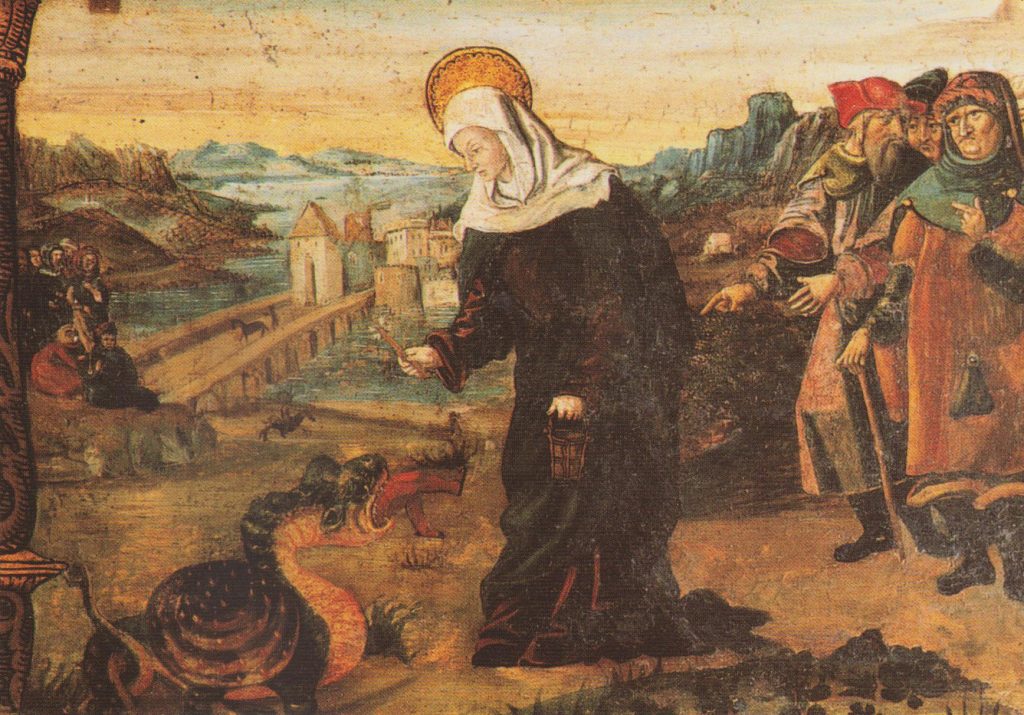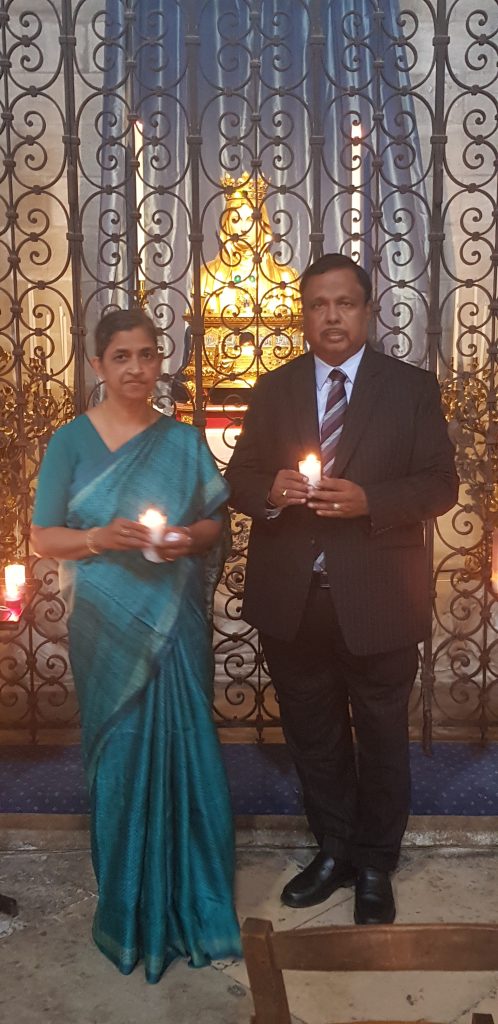Raaji and I left from St. Panchraas Railway Station in London by the “Euro Star”, a fast luxury train, for Avignon which is in Southern France. The facilities provided in the Euro Star were excellent, and the punctuality it maintains is simply wonderful. Brother Sayo and Gigi joined us from Lourdes, and we went to the Saint Martha Royal Collegiate Church in Tarascon, where Christians have been coming for centuries to venerate the relics of St. Martha. It is believed that in 48 AD Martha, her sister Mary together with her brother Lazarus, Maximinus (one of the seventy), and Marcella (a follower of Martha) were put into a boat with neither sail nor rudder into the Mediterranean Sea by the hostile Jews. Jesus protected their boat and brought it to the shores of Provence in Gaul (Southern France). Lazarus preached the gospel in Marseilles and converted the city into Christianity, while Martha travelled to Avignon. The inhabitants of Avignon pleaded with her to save them from the monster called the Tarasque, which devoured the people and the beasts of the place. Martha approached the cave with a cross in her hand and ordered the monster to come out in the name of Christ. The monster obeyed and Martha led it to the people who then killed it. The place was then named Tarascon, and Martha continued to live there preaching the gospel to the inhabitants and converted them. A chapel was built enclosing her tomb, and it became one of the most famous sanctuaries of Provence. In 500 AD, Clovis, the king of the Franks who fell ill as a consequence of his siege of Avignon, came to pray at the tomb of Martha and was healed.

The relics of Saint Martha were discovered in 1187, and a church was built in the Gothic style. Many came there to seek blessings from the hostess of Christ including the kings of France and Sicily, Cardinals and future Popes. The crypt was restored again in the 17th century and two hexagonal chapels were added. Thousands of pilgrims from different parts of the world come to venerate the relics of St. Martha and pray. And Pope John Paul II said that people come to the Collegiate every year “to experience a privileged moment of spirituality in prayer and reflection”.
The faithful flock to this tomb containing the sacred body of St. Martha confiding in her their suffering and hopes so that she can intercede for them. Today the church appears to be considered more as an archaeological Gothic structure than the priceless final resting place of a beloved Saint of Jesus Christ. There are life-size paintings adorning the walls of the church but the faithful who come from different parts of the world cannot understand anything about them other than that they are very old.

Every literature inside this church is in French and nothing is found in English. This indeed was disappointing as we traveled through France. When we traveled along the British terrain in the Euro Star, announcements were made both in English and French but English was heard no more soon after it made its entry into France. I saw many tourists who were disgusted as there was only French and only French signboards everywhere. It may be an attempt to portray French as a great language. While I was not bothered about their policy to uplift their language I was really disturbed at the fact that even a universal church could not provide any literature in English for the pilgrims who assembled there. Neither were there any guides or priests present to explain the great details of the life of St. Martha whose zeal, love and sacrifices for her Master would inspire the faithful who come to seek her prayers and blessings. I praise and thank Jesus for leading me to this heavenly opportunity to seek the prayers and blessings of one more of His blessed Saints.
